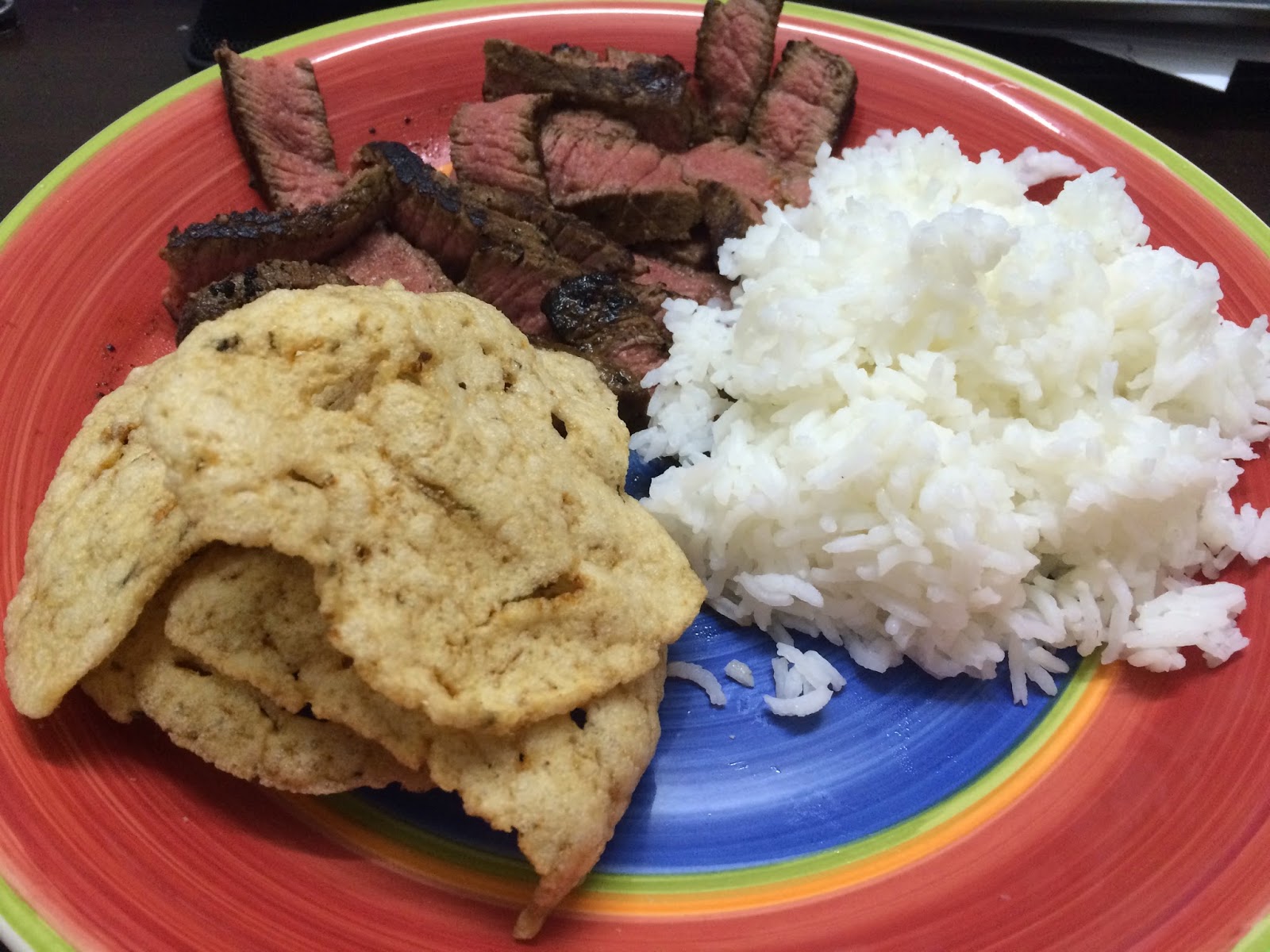To me, this shows just how much people are worried about whether they're eating enough or not.
I am a full-time student at Monash University Malaysia and I live in Lagoon View Resort Condominium which is located in between campus and Sunway Pyramid (place that I usually get my groceries from). Sometimes people, mostly fellow students will casually ask me the question. When I reply, "5-6 meals per day and between 2,400- 2,800 calories." the person is astounded. Then they'll give me reasons like "I don't have enough time" or "it's too expensive to eat like that."
My thoughts: false, and false. As a student myself, I know excuses like those can be simply thrown to avoid being held responsible for your own bad decisions. I can tell you that I've both run the numbers and put them to the test in the real world. No matter who you are or where you live, you can do this!
The Four Kitchen Essentials
Before you get rolling in the kitchen, you're going to need to outfit yourself with a few essential appliances: a microwave, an oven, a rice cooker and a large grill pan. You probably already have access to the first of those things, but trust me, the other three are just as important to spice things up.
They allow you to prepare - in large quantities, I might add- all that is necessary to eat according to your desired macros in a university setting. Other electrical appliances like blender is nice to have, but they aren't necessary and most apartment won't provide it.
Below are the basic meals I prepare in each of the essential kitchen appliances. I highly encourage you to do some research to find recipes that fit your taste buds.
1. Microwave
I use my microwave to reheat all of my meals. Besides that, I also use it to cook red potatoes and sweet potatoes, both of which can be considered as my staple food. To cook any kind of potato in the microwave, make sure you do the following:
1. Rinse and scrub the potato with your hands in water at room temperature. Potatoes are grown in the ground, so they usually have a little dirt on the skin, and they typically come in mesh bags, they'll also pick up other contaminants along the way. Obviously cooking them at high temperature will kill the bacteria , but who wants to eat dirt?
2. Using a knife or a fork, poke a few holes in each potato to ensure even distribution of heat throughout the whole potato.
3. Place the potatoes into a microwaveable container and fill the container with water until it reach approximately half of the potatoes. Cover the container with a lid but make sure that lid is not fully sealing the container.
4. The cook time will vary depending on the size of the potatoes and the settings of the microwave,
but a rough estimation would be around 4 min each side.
Check the readiness with a knife; if you can put it through the potato with relative ease, you're good to go. If your knife stops or becomes hard to push, pop the potato back into the microwave for another couple of minutes.
 |
| Purple Sweet Potato with Wasabi sauce and baked chicken |
2. Oven
We all know how busy a university workload can get, which is why the oven is a must-have for me. You just simply wrap the tray with an aluminium foil and place your seasoned protein source and pop it in the oven and forgot about it.
Beyond being convenient time-wise, cooking with an oven makes your meats leaner; the fat will melt away into the juice/sauce you're cooking in. It also keep things interesting, because the combinations of meats and sauces are infinite.
My favourite meat by far to cook in an oven for a long period of time is the pork tenderloin, because it gets so tender and easy to eat as it just melt in your mouth. But there are thousands of recipes out there, so I encourage you to try your favourite meats and discover the ones you like.
 |
| Roasted Pork Tenderloin wrapped with Beef slices |
This is the basic process:
1. Preheat your oven to around 200 deg and wrap the tray with aluminium foil so that the meat wont stick on the tray and you could avoid any washing. ( Fuck washing !!)
2. If the meat is too thick, make a few cut throughout along the meat so that cooking process will be even. Cover the meat with a thin layer of oil (optional) and spice it up with any seasoning of preference.
 |
| Chicken Breasts |
3. Pop it in the oven and let it cook! The meat will take around 15-20 mins to be cooked at 200-250degs.
4. After your meat finished cooking, retrieve the meat with a fork and dump the remaining content down the drain.
 |
| Roasted Beef |
Besides that, if you are craving for some fries, one of the best way to indulge in the healthy version of it by oven-baking with minimal oil and salt.
This is the basic process:
1. Wash and lightly scrub the potatoes with running water. Remove the skin of the potatoes because it may contain dirt or any contaminants.
2. Cut the potatoes into preferable sizes with almost similar thickness to ensure all the potatoes are cooked evenly at the same time. Use a fork to pierce the slightly thicker potatoes (optional).
3. Drizzle some oil (olive, canola, coconut- your choice) on the potatoes. Add a pinch of salt and black pepper and toss the potatoes around so that the seasoning are spread equally.
4. Pop it into the oven for around 20 mins at 200-250 deg. When the edges are golden-brown, it's ready to go!
 |
| Baked sweet potato + Steak |
3. Rice Cooker
It is basically an electric pot that you just plug in. Follow the directions that come on the rice of your choice. A couple of tips:
1. Put a bouillon cube in with your rice and water. It will give your rice a better flavour without adding calories.
2. Dress your rice up with different vegetables and sauces.My favourites are red bean and pesto.
4. Electric grill / grill pan
It depends whether you have a stove in your apartment, but if you do, you could get the grill pan and if you don't, the electric grill would be your best bet. Get the biggest one you can get, so you can cook a lot of food at one time.
Some of my favourites to make on the grill are lean beef burger patties, steak, and chicken breasts. Because of the design, excess fat runs off, making it acceptable to use fattier cuts of meat.
 |
| Grilled Pork Tenderloin |
 |
| Grilled Steak |
 |
| That's my kind of salad ;) |
Stretch The Meat You Eat
 |
| This would probably cost around RM 60-70 if you were to eat out in Sunway Pyramid. |
Buy what's on sale and plan your meals around that, rather than planning a meal and then buying the ingredients at full price. If you've space in your house or apartment, a small freezer can help you squeeze more than one meal out of a bulk buy.
Meat is the perfect item to buy big and freeze for a period of time. For instance, I would grab all of the meat at 50% off in Jusco and store them in the fridge/ freezer. Two pieces of 7-8 oz chicken breasts cost RM 8-10, originally, half the price would be RM 4-5 for two meals ! If you have access to any wet market or wholesale stores, that would be the best.
Canned Tuna in water or extra virgin olive oil should also be on your menu somewhere. It is low in fat, high in protein , and can be purchased at a normal price of RM 5.40 per canned with approximately 33grams of protein. That is relatively cheap compared to the price of food in Sunway which ranged from RM 7-10 per meal and it doesn't provide sufficient amount of nutrients for your building muscle-goal.
Make Cents of Carbs
The good thing about carbs is that they are relatively cheap.
You cant go wrong with rice. I eat a lot of it, probably almost every meal; a cup or more a meal. I don't really eat brown rice anymore because if you understand glycemic load- you would too. A bag of 10kg white rice costs around RM 30-40 and it could last for a month or two.
Potatoes cost RM 0.19 per 100 grams - perfect. 28 medium size potatoes cost me around RM 8- 9 and it will last about 2 meals a day for one week. 2 medium size potatoes consists of approximately 40 grams of carbs and about 160 calories.
Say Yes To Sauce
I've seen bodybuilders in magazines who eat their plain chicken breast, plain rice, plain everything. Honestly, you could do the same if you want to but I can't because I know it will be a matter of time before I breakdown and start to snack on other junk food. I need a little bit of flavour in my life, That means sauce, dressing or anything to spice things up a little.
I know what you're thinking, but sauce isn't a big deal. You've got to have a little salt in your food, or pepper, or whatever spices you want, You don't need to choke down that super-plain , dry chicken breast.
Remember, you have to enjoy the process and it's not all about suffering 24 hours a day. Spice it up.
Eating Big On A Budget
Meal 1
Meal 3
Whey Protein - 1 or 2 scoops
Meal 4
Note: You do not have to eat that many meals in a day, provided that you can ensure that you consume all the macro's that you need for your fitness goals. Personally, I can't eat like that all the time during the semester; sometimes I cook, sometimes I eat out. There must always be a balance.















































